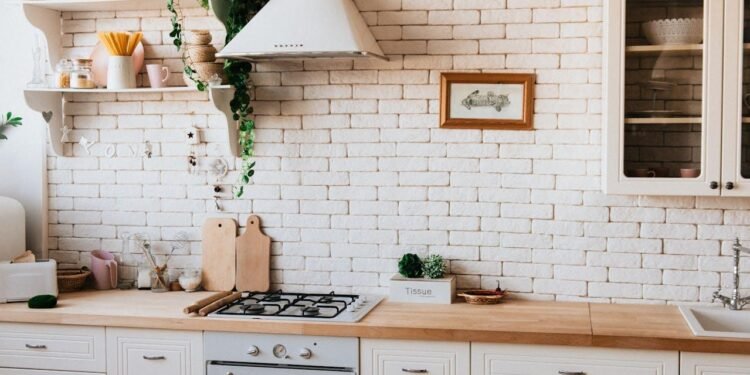Dreaming of a kitchen that’s as beautiful as it is functional? Kitchen renovation can seem like a huge, scary project. But don’t worry! It doesn’t have to be a nightmare.
With a little planning and the right steps, you can transform your kitchen into the heart of your home.
In this blog, we will walk you through the entire kitchen renovation process, from start to finish. We’ll break down each step into easy-to-follow guides, so you can feel confident in tackling this project yourself.
Setting Clear Goals
Before starting a kitchen renovation, it’s important to set clear goals. Determine what motivates the renovation. Is it a need for more space due to a growing family, a desire for better storage and organization, or a wish to update the look and style of your kitchen? Knowing your main objectives will help steer your decisions and keep your project focused.
Think about how you use your kitchen. If you cook often, you might need more counter space. Consider whether the current layout works or if it needs reconfiguration to suit your needs better. Also, think about the future; if you plan to sell your home soon, opt for renovations that could increase its value and attract buyers.
Exploring Design Styles
Choosing a design style is one of the most enjoyable parts of the renovation process. Whether you prefer a modern, sleek look or lean towards something more classic and timeless, your kitchen’s design should reflect your personal taste and complement the rest of your home. When considering ideas about traditional kitchen designs, think about elements that make these spaces enduringly popular. Traditional kitchens often feature rich wood cabinetry, stone countertops, and a warm, inviting atmosphere.
However, don’t be afraid to mix elements of different styles to create a space that feels uniquely yours. For example, a traditional kitchen with modern appliances or contemporary lighting fixtures can offer the best of both worlds. It’s also helpful to gather inspiration from magazines, online platforms, and even friends’ homes to see what resonates with you. The key is to find a design that not only looks great but also works for your lifestyle.
Budgeting for Your Renovation
Establishing a budget is essential for any renovation project, as it influences nearly every decision, from material selection to the scope of work. Start by setting a spending limit for your kitchen renovation and try to adhere to it, allowing some flexibility for unexpected costs, which are common.
To create a realistic budget, categorize your expenses such as cabinetry, countertops, flooring, and appliances. This breakdown helps you understand where your money is going, enabling you to decide where to invest more and where to cut back. For instance, if you prefer high-end appliances, you might choose more cost-effective options for cabinetry or countertops. A well-planned budget is key to a successful renovation.
Planning the Layout
Choosing the right layout affects everything from cooking to cleaning to hosting friends and family. Start by looking at your current kitchen setup. Think about what’s working well and what’s frustrating. For example, if you often find yourself bumping into others or scrambling for more counter space, it’s probably time to consider a new layout.
When you’re planning out the new setup, think about the classic work triangle. This setup puts your sink, stove, and fridge in a triangle shape to make them easy to reach, which really helps when you’re cooking or cleaning up. It’s a popular layout because it really makes kitchen tasks simpler. But don’t feel stuck with it—modern kitchens often go for an open-concept design, which opens up the space and connects it more with other parts of the home, making the kitchen feel bigger and more welcoming.
Choosing Materials and Finishes
The materials and finishes you select for your kitchen greatly affect both its look and longevity. Choices range from countertops to cabinets to flooring, and each plays a vital role. Begin by considering how you use your kitchen and what materials best suit your lifestyle. For instance, if you cook often, you might choose durable and easy-to-clean surfaces such as quartz or granite for your countertops.
Cabinetry is another important aspect. Solid wood cabinets are favored for their durability and classic look, but there are also cost-effective alternatives like laminate or thermofoil that mimic this appearance. When choosing finishes, think about how they will go with the rest of your home so, in the end, you get a cohesive design that smoothly connects your kitchen with adjacent areas.
Lighting Your Kitchen
Good lighting is key in a kitchen because it helps you see what you’re doing and also makes the space look better. When you’re setting up lighting in your kitchen, you should think about including different types of lights:
- Task Lighting: This type is really important for places where you’ll be doing most of your chopping and mixing. Lights under the cabinets work great because they shine right on the countertops.
- Ambient Lighting: These are lights that brighten up the whole kitchen, like the ones you might have on the ceiling. They make sure the entire space is well-lit so you can move around safely and easily.
- Accent Lighting: These are more for looks. You can use them to light up a special piece of art or your fancy glass-front cabinets. They’re also nice over the kitchen island, adding a bit of style and focus.
When picking out light fixtures, you should consider how they look with the rest of your kitchen’s decor. It’s okay to choose some that stand out and make a statement, as long as they also do their job well. This way, you’ll have a kitchen that’s not only functional but also inviting.
Adding Storage Solutions
To avoid clutter and maintain organization, assess your current and future storage needs. Consider if you need more room for items like pots, pans, pantry goods, or small appliances. Customizing storage with solutions such as pull-out shelves, lazy Susans, and deep drawers can greatly improve functionality. Also, utilize often-overlooked spaces like above the refrigerator or under the sink to maximize storage in smaller kitchens.
Final Touches and Decorating
Once the major renovations are complete, focus on the final touches that personalize your kitchen. Choose a color scheme that matches your home’s style; neutral tones offer a timeless look, while bold colors add flair. Decorative items like artwork and plants can inject personality, but avoid overcrowding surfaces to maintain practicality. The aim is to strike a balance between a welcoming atmosphere and functional design.
A kitchen renovation is more than just a makeover; it’s an investment in your home’s heart. With careful planning and the right steps, you can transform a tired space into a functional, stylish hub. Remember, every kitchen is unique, so tailor these guidelines to your needs and dreams. The key is to envision your ideal kitchen and break down the process into manageable steps. With patience and a clear vision, you can create a kitchen that not only looks amazing but also enhances your daily life.
Your kitchen is the stage for countless memories. Let it be a space you love spending time in.












